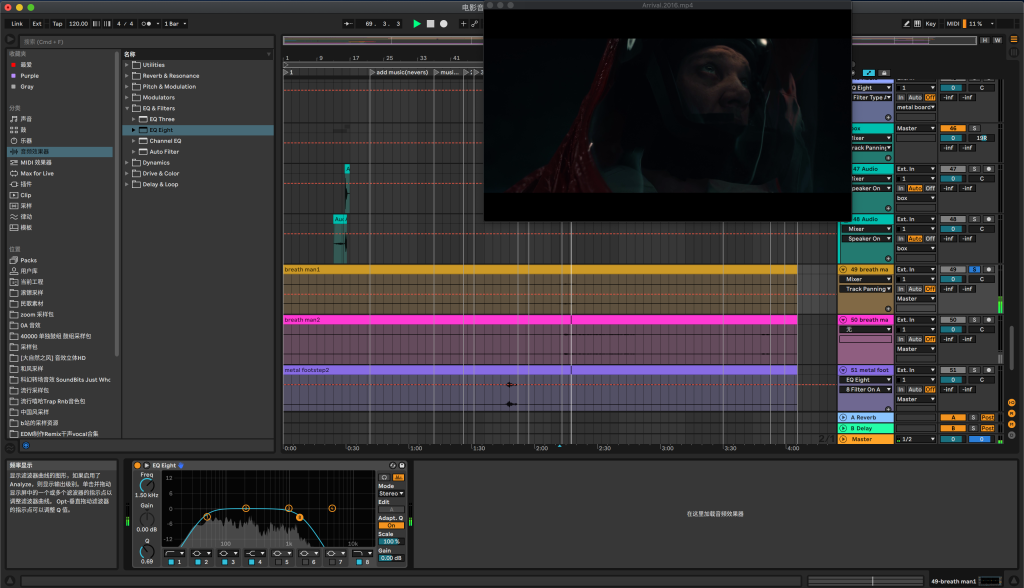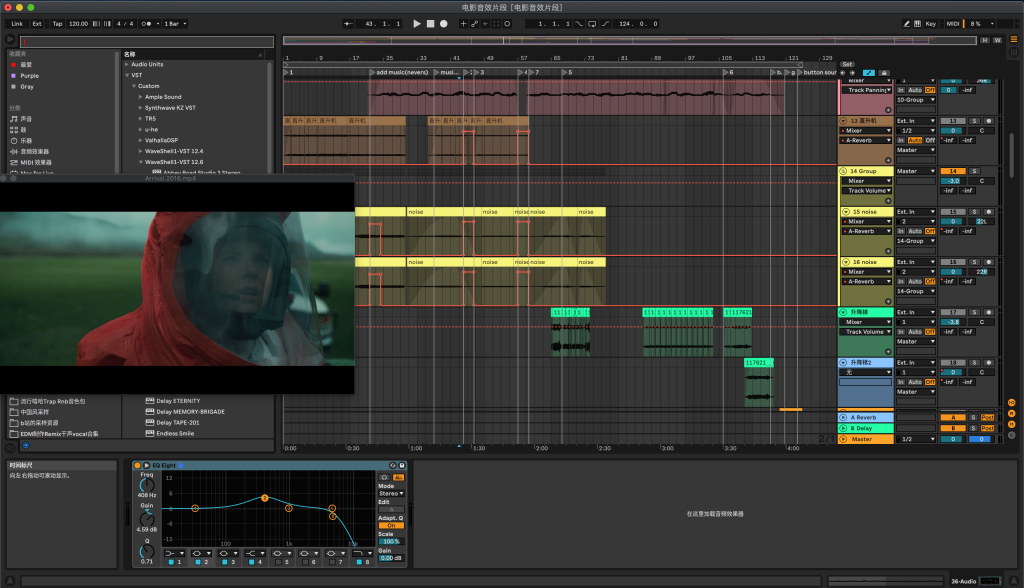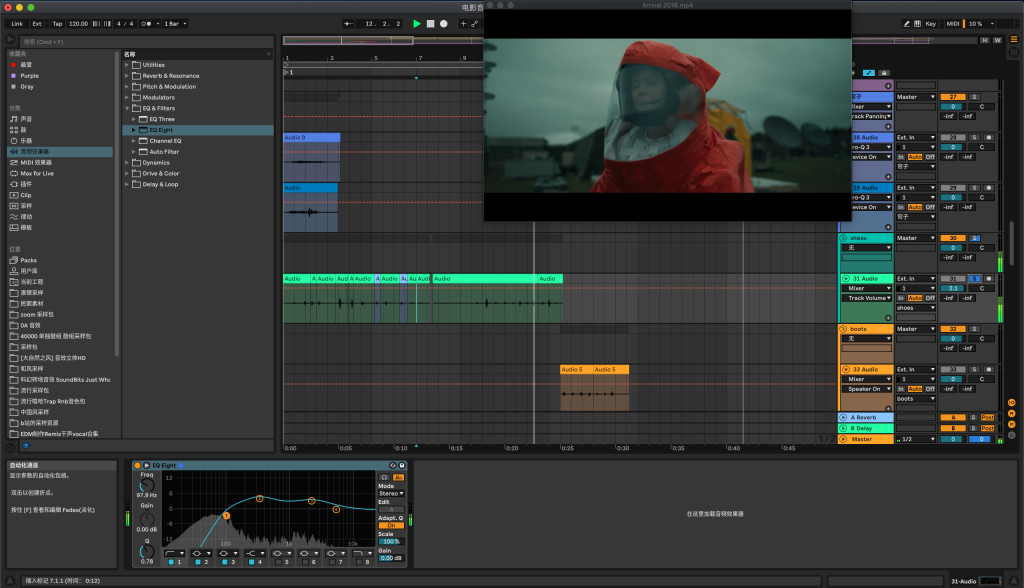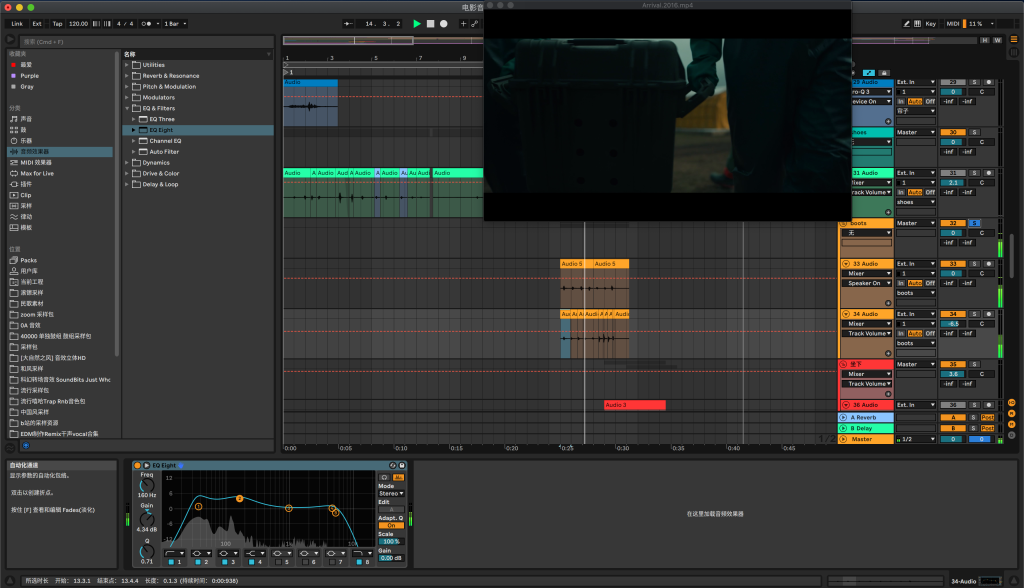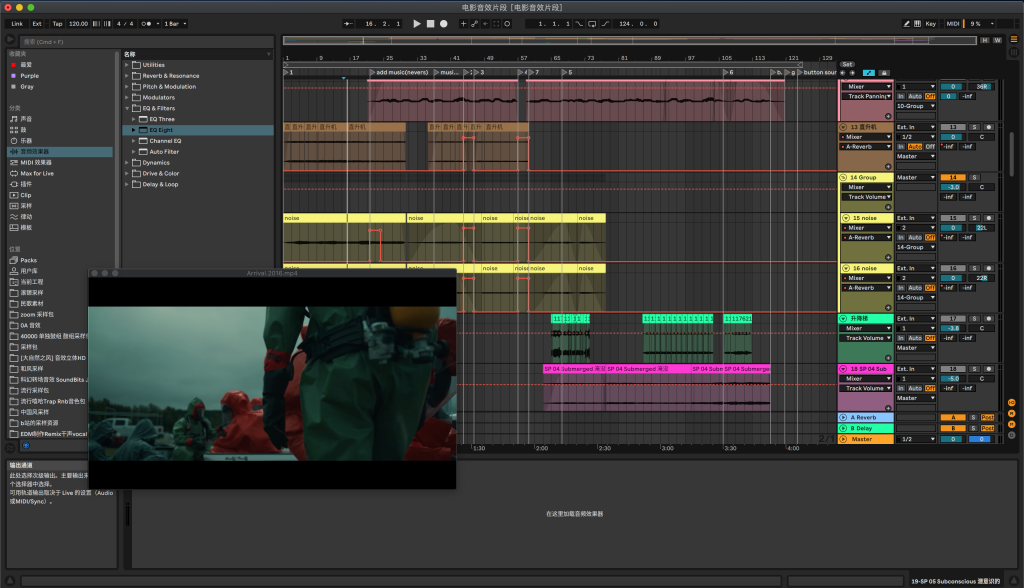Reverb:
Early reflections affect the perceived distance of sound. Late reflections impact the width of the sound in the rear. Reverberation time, late reflections, and pre-delay influence the size of the room. A larger pre-delay results in a larger room, while a smaller pre-delay leads to a smaller room. With a larger pre-delay, the sound appears closer; with a smaller pre-delay, the sound seems farther away. Pre-delay influences both the size and perceived distance of the space.
Delay:
Delay imparts a noticeable sense of sound retreat, establishing a strong front-back relationship in the audio. Reverberation creates a sense of spatiality, enhancing width, and immersing the listener in a particular acoustic environment. The delay and feedback amount determine the number of feedback iterations.
Bibliography
Izhaki, R. (2017) Mixing audio. Taylor & Francis Group.
Mixing ideas:
- The background ambient sound is in stereo, with an emphasis on the mid-low frequencies to increase tension. Add high-frequency timbres to the background music to maintain a balanced frequency spectrum.
- The helicopter sound is in surround sound (stereo), transitioning from the right ear to the left ear and then back to the center.
- Footstep sounds and the sound of clothes rubbing (monaural).
- The sound of placing a box is biased towards the right ear (monaural).
- The sound of driving starts from the center, moves to the left ear as the camera moves, and then weakens. Later, as the camera angle becomes overhead, it returns to the center, with added environmental reverb (monaural).
- When the camera returns to the female protagonist, the car sound increases, and the vehicular environmental mix ends.
- As the camera turns to the alien base, car sounds and ambient sounds disappear. As the camera moves downward, car sounds gradually reappear, accompanied by environmental reverb and increasing ambient noise.
- When the camera turns to the vehicle, the car sound increases and is biased towards the right ear. When the camera returns to the female protagonist, the car sound moves back to the center.
- The elevator sound blends with the environment, so I choose to use stereo. As the shot goes from a long shot to a close-up, the elevator sound gradually increases.
- The character’s breathing sound is filtered (low pass and high pass) as it’s inside a protective suit (monaural).
- Upon entering the alien base (through a tube), the background noise disappears. The music and low frequencies continue, with some low-frequency sounds added to enhance the atmosphere.
- When the elevator stops, the sound stops, but moving sounds continue (draw a volume envelope).
- In the base, balance the sound across all frequency bands, all requiring heavy reverb (stereo).
- When the camera looks upwards, introduce a simulated tinnitus-like ultra-high-frequency sound, emphasize it, and continue it to the end, fading out (stereo).
- The screen glitch sound fades in and out with the camera movement (monaural).
- Cut the high frequencies of the button sound with an EQ to avoid interference with the glitch sound.
A part of mixing

